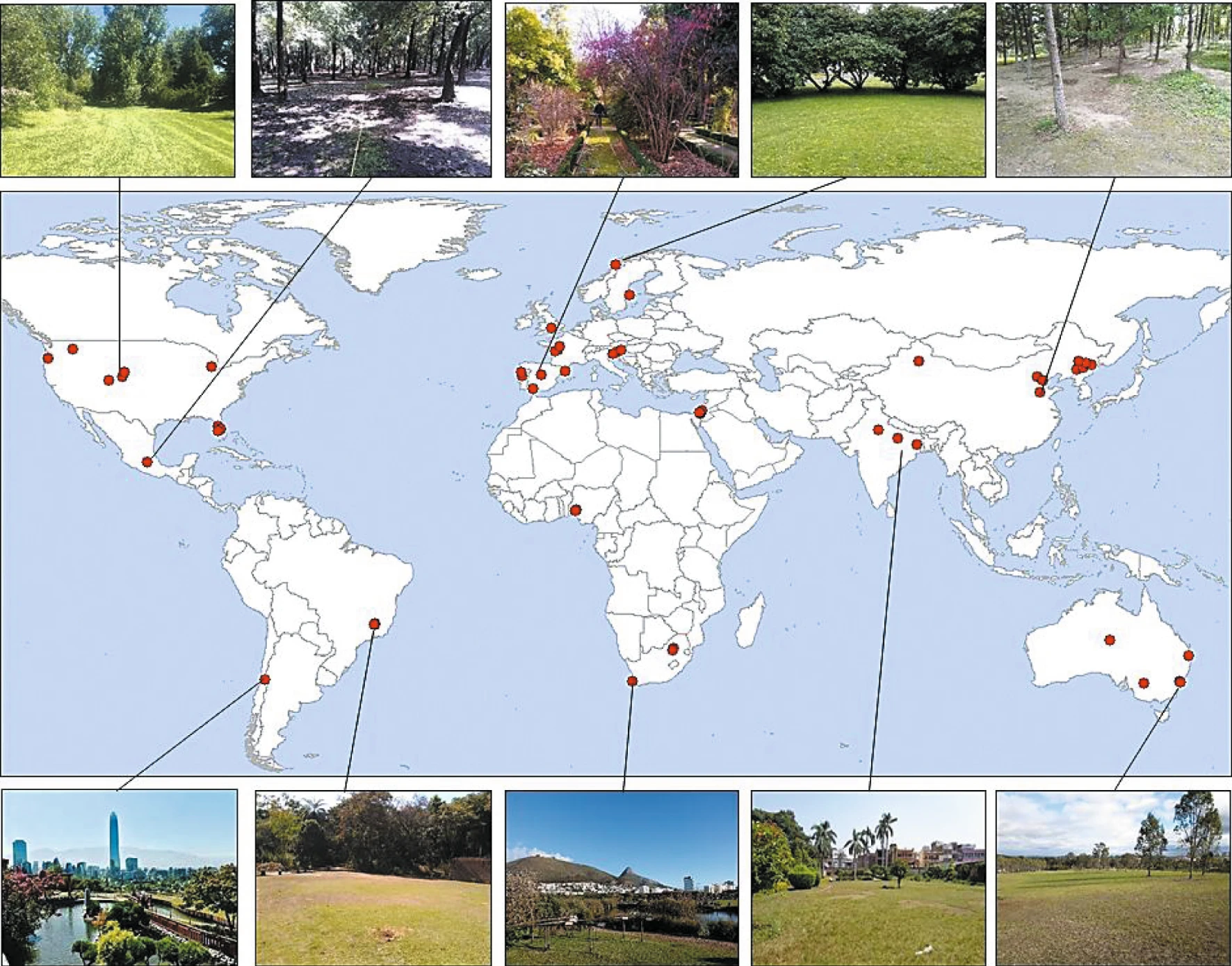Soil biodiversity supports the delivery of multiple ecosystem functions in urban greenspaces
Fig. The distribution of soil sampling locations in urban greenspaces.
While the contribution of biodiversity to supporting multiple ecosystem functions is well established in natural ecosystems, the relationship of the above- and below-ground diversity with ecosystem multifunctionality remains virtually unknown in urban greenspaces. Here we conducted a standardized survey of urban greenspaces from 56 municipalities across six continents, aiming to investigate the relationships of plant and soil biodiversity (diversity of bacteria, fungi, protists and invertebrates, and metagenomics-based functional diversity) with 18 surrogates of ecosystem functions from nine ecosystem services. We found that soil biodiversity across biomes was significantly and positively correlated with multiple dimensions of ecosystem functions, and contributed to key ecosystem services such as microbially driven carbon pools, organic matter decomposition, plant productivity, nutrient cycling, water regulation, plant–soil mutualism, plant pathogen control and antibiotic resistance regulation. Plant diversity only indirectly influenced multifunctionality in urban greenspaces via changes in soil conditions that were associated with soil biodiversity. These findings were maintained after controlling for climate, spatial context, soil properties, vegetation and management practices. This study provides solid evidence that conserving soil biodiversity in urban greenspaces is key to supporting multiple dimensions of ecosystem functioning, which is critical for the sustainability of urban ecosystems and human wellbeing.
Read More: https://doi.org/10.1038/s41559-022-01935-4
Source: Nature Ecology & Evolution

